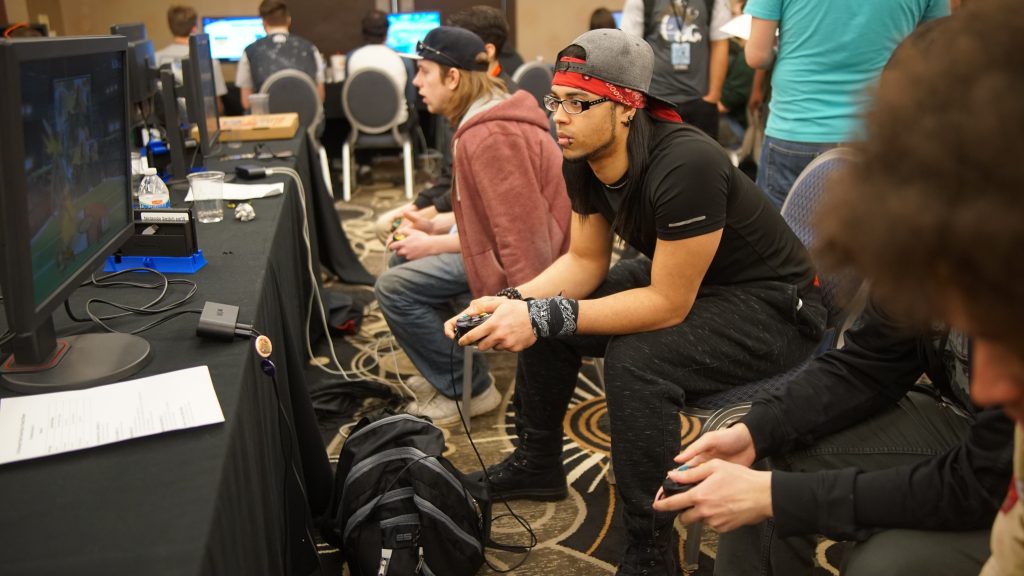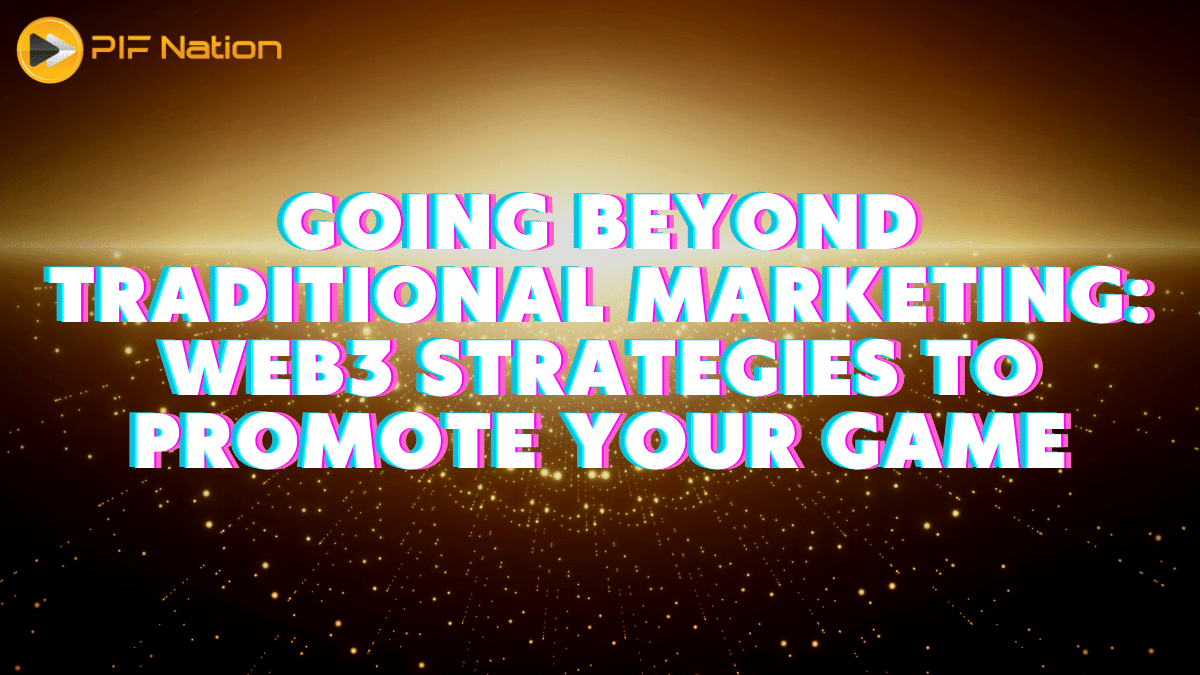In the burgeoning world of indie gaming, developers are breaking free from the constraints of traditional marketing strategies. As games become more intricate and immersive, the tactics used to promote them must evolve as well. This is where Web3 comes in, opening a realm of decentralized Internet opportunities that indie game creators can tap into.
The New Frontier: Web3 in Marketing
Web3 is dramatically reshaping how we view and interact with the online world. So, what makes it so unique? The answer lies in its ability to create direct, unhindered connections between users and providers, giving the power back to the people.
Traditionally, the internet as we know it operates on a centralized model. Think of social media platforms, online marketplaces, or even video game distribution platforms. These all rely on centralized servers to host and manage data, with control concentrated in the hands of a few key players. If you are a game developer, you’ve likely navigated these channels, encountering challenges like high platform fees, data privacy concerns, and the constant struggle to be seen amidst a sea of competition.
Enter Web3, an entirely new approach to online interaction. Instead of data being stored and controlled by a central authority, Web3 uses blockchain technology to distribute data across a network of computers, making it nearly impossible to manipulate or control. In a Web3 world, there are no gatekeepers standing between your game and potential players.
This transformation holds immense potential for game marketing. Imagine bypassing third-party intermediaries, retaining more profits, and building direct relationships with your player base. The traditional limitations are fading, replaced with a playground of possibilities where indie developers hold the reins.
Web3 Marketing Strategies for Indie Games

Creating a captivating game is only half the battle—the other half lies in getting it into the hands of players who will love and advocate for it. That’s where Web3 marketing strategies enter the scene. These Web3 marketing techniques breathe new life into the world of indie game promotion, enabling developers to connect with players in unique and mutually rewarding ways.
Exploring Airdrops: Turning Players into Marketers
In the context of Web3 and blockchain technology, airdrops are the digital distribution of game tokens or unique in-game assets to players. This creates a buzz around your game that traditional marketing strategies might struggle to achieve.
What makes airdrops an effective marketing tool in the Web3 realm? It’s simple: they harness the power of incentives and community engagement. As an indie game developer, you can conduct an airdrop campaign, providing your game’s tokens or unique NFT-based assets to players. These could be distributed as rewards for early sign-ups, accomplishing specific in-game tasks, or even participating in community events.
The magic lies in how players react to these airdrops. They become more invested in the game’s ecosystem when they receive tokens or assets. They start sharing their experiences with friends, posting about it on social media, or trading the tokens on Web3 marketplaces. In essence, your players morph into passionate marketers, spreading the word about your game far and wide. It’s a powerful form of word-of-mouth marketing, organically boosting your game’s visibility and player acquisition.
Leveraging Partnerships: Building Trust and Visibility
Think of strategic partnerships as your golden ticket to more visibility and trust. The power of collaboration—joining forces with established entities within the Web3 space—amplifies your game’s reach and credibility. It’s a simple concept yet incredibly potent: when you align your game with recognized brands, personalities, or platforms, you benefit from their existing audience and established trust.
Imagine co-creating an exclusive Quest for your game with a popular influencer on a platform like PIF Nation’s Quests. This partnership increases your game’s visibility and validates it in the eyes of potential players. These players, who already trust and follow the brand or influencer, are more likely to try your game, thus leading to broader recognition and growth of your player base.
Influencer Collaborations: Harnessing the Power of Social Proof
In the interconnected Web3 landscape, influencers wield a powerful sword—the sword of social proof. You might have found yourself downloading a new game simply because your favorite YouTube or Twitch streamer was playing it. That’s social proof in action and a compelling force in attracting a larger player base.
Influencer collaborations, especially when integrated with engaging Quests on platforms like PIF Nation’s Quests, can create a wave of new players eager to explore your game. Influencers bring along their audience, people who trust their recommendations and are willing to try out your game. A well-strategized partnership with an influencer can make your game the talk of the town, driving a surge of player engagement and visibility.
Gamified Marketing Campaigns: Engagement through Play
Welcome to the era where attention is as valuable as gold and gamified marketing campaigns are the alchemists turning attention into engagement and retention. By infusing gameplay elements into your promotional efforts—be it through unique challenges, enticing reward systems, or competitive leaderboards—you can ignite player curiosity and foster an engaging environment.
Consider introducing a leaderboard, rewarding top performers with exclusive game assets. The thrill of a challenge, the competitive spirit of climbing the leaderboard, and the allure of exclusive rewards can motivate players to stay engaged. Remember, a player who is consistently engaged is not only more likely to enjoy your game but also more likely to recommend it to others.
Potential Challenges in Web3 Marketing and How to Overcome Them
While the Web3 landscape offers vast opportunities for groundbreaking marketing strategies, it isn’t devoid of its challenges. While exciting, the dynamic and decentralized nature of Web3 also presents unique hurdles that game developers need to recognize and conquer. Let’s examine some of these challenges and their potential solutions.
Understanding the Technology
The Web3 space can be intimidating for many due to its technical complexities. Familiarizing yourself with concepts like blockchain, cryptocurrencies, and NFTs is essential to creating effective marketing strategies.
Solution: Take the time to learn about these technologies. Numerous online resources, webinars, and courses can help you understand the basics. Remember, knowledge is power in this evolving landscape.
Trust and Security Concerns
Due to numerous cyber-attacks and scams in the crypto world, potential players may be wary of participating in Web3 initiatives.
Solution: Ensure that your security measures are top-notch and transparently communicate this to your players. Collaboration with respected platforms, like PIF Nation’s Quests, can also enhance your credibility and alleviate security concerns.
Regulatory Uncertainty
The legal framework for Web3 is still in development, leading to potential uncertainty and risk.
Solution: Stay abreast of current laws and regulations in the countries where you plan to market your game. Seek advice from legal experts familiar with the Web3 environment.
Looking to the Future: The Evolution of Web3 Marketing
Web3 marketing is not a static field—it’s a vibrant and constantly evolving ecosystem. Staying ahead of emerging trends is crucial for indie game developers who want to keep their marketing strategies relevant and effective.
As Web3 technology evolves, so too will its applications in the gaming industry. We can anticipate more integrated and interactive marketing campaigns, leveraging blockchain technology to provide transparent and fair gaming experiences.
For instance, the growth of virtual and augmented reality in Web3 could provide fresh avenues for immersive marketing strategies. Platforms like PIF Nation’s Quests may expand to offer VR-based quests, providing new and exciting ways to engage players.
Conclusion
Embracing Web3 marketing strategies can propel your indie game to new heights. From leveraging platforms like PIF Nation’s Quests to harnessing the power of influencers, the possibilities are endless in this Decentralized Internet world. As we journey into the future of Web3, remember that creativity and innovation will always be your greatest allies.
In conclusion, the transformative potential of Web3 in indie game marketing is not just a possibility—it’s a reality waiting for you to seize it. Harness the power of Web3, and let’s level up your game’s success together! For promotions and Quest services inquiries, click here or contact us at [email protected]
PIF Nation Links:
Website | Twitter | Discord | Telegram | Facebook | LinkedIn | QUEST
